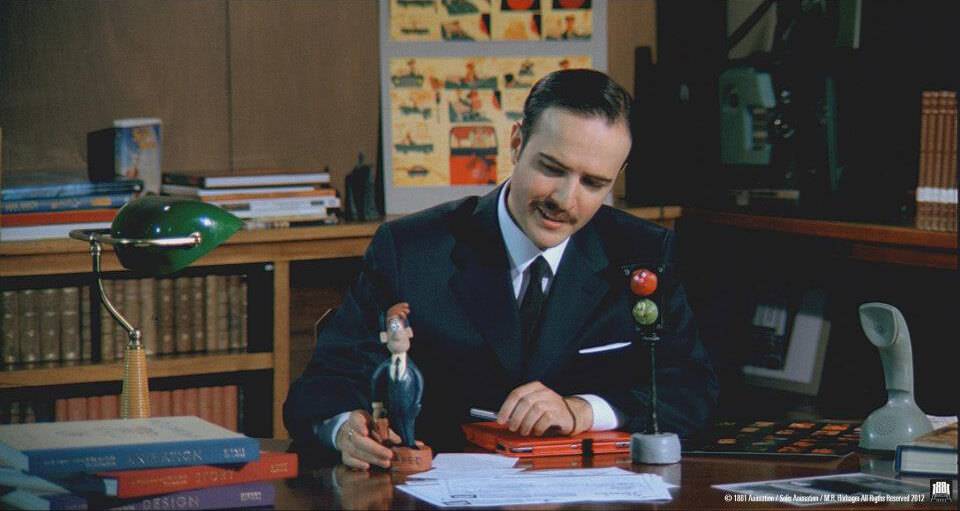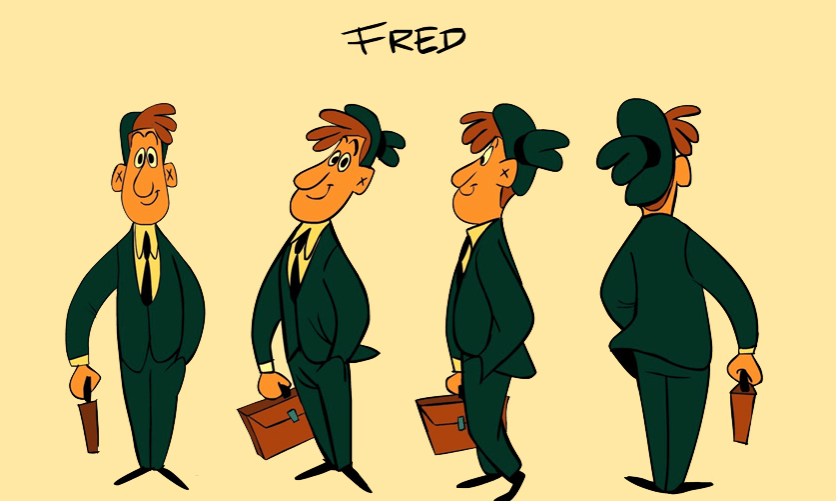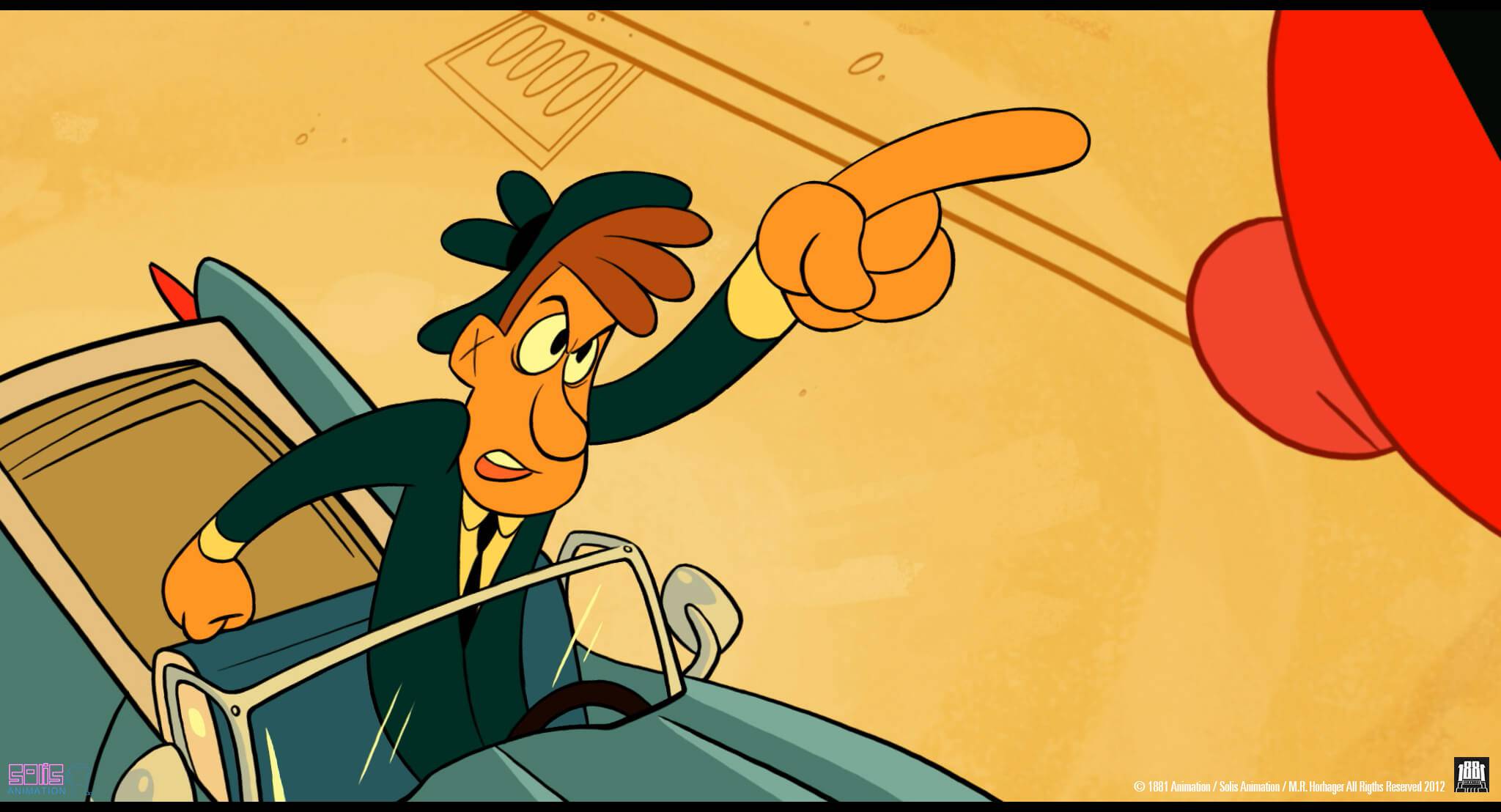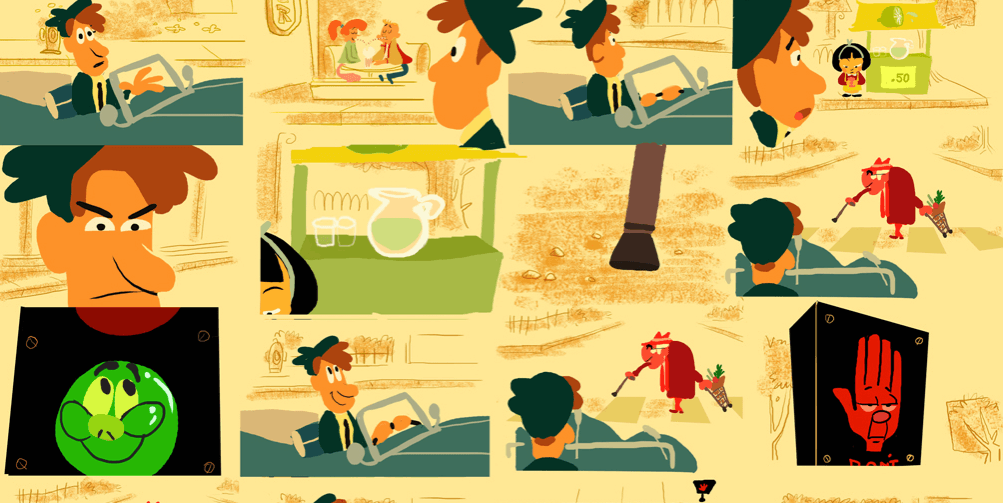I Hate You Red Light! Interview with Simon Santos
Thank you for talking to Skwigly, First of could you tell us a little about your background? Have you always enjoyed animation?
For the most part of my life I have enjoyed and loved animation as a spectator, I became involved with film at 14 when I had the chance to work on a short film in my school, after which I became obsessed with film making and I ended up dropping out of ninth grade to start working as a grip here in Colombia. This took me on an amazing journey, learning whilst making films, as things started progressing I began to plan what would become 1881, the thing is animation never crossed my mind at that time.
What inspired the scenario of the film? Why red lights?
Originally we set out to do a short film called ¨Hamelin¨ which is currently in production and planed to release it in the second half of this year, this was the first project the University (our main investors) began supporting but down the road we saw the chance to take a project J.M had been working on since 2009 with co-director M.R. Horhager. The project was ready for production and we needed very little to make it happen so we took the project to CineColombia the biggest theatre chain in the country and sold it to them (in Colombia theatre chains are required by law to buy and show Colombian produced short films before movies) and half way down the road we also presented the project to the University and they loved it. All of this made the short possible.
The scenario and idea came from J.M. when he was living in Toronto several years ago he was late for a meeting and as usual he came across all the red lights up to a point where he imagined the light having a face and a personality so he could yell at them. This lead to a more complex idea about the things that tend to slow or stop you in life and how they have a reason to be there, he began to draw and ended up with Fred and the Red Light. Soon after M.R. came in and took the idea and all of the artwork J.M. had developed and wrote the script.
The live action “Disneyesque” parody is a nice addition to the film and really helped place it, is this why you decided to add it alongside the animation?
We love the intro and we were thrilled to be able to make that tribute to Walt Disney and Walter Lantz, and why we created it is actually a really cool story. Originally we never intended for that intro sequence but after we sold the short to CineColombia we found out it had to be at least 7 minutes long, at that time the film was only 5 minutes long.
We were too far ahead to back out and we didn’t want to, so we began thinking on how we could extend the short. Animation was not an option because of the budget and deadline, after a couple of days M.R. remembered something he once told J.M. while they were in Toronto, He said: ¨Maybe one day you will be like the Latin American Walt Disney¨ and he came up with this idea of making a live action intro just like the ones Disney used to make. At first it sounded a little crazy but then we saw the perfect opportunity to experiment with live action. I was able to go back to my live action days and directed that segment, we worked for almost two months to find the perfect location, the props and the clothes, we worked with an amazing cinematographer Luis Otero who was able to nail the look and feel and we shot the whole thing in a 35MM 1970’s Arri BL4 which made the whole thing look legit and the final result was amazing. Sometimes when we show the short and J.M. is in the room people don’t recognize him and some times people think we took the footage from an old industrial film or even a Disney movie and we love that because it means we did it right.
The use of a 1950’s UPA style of animation is something you have all used in you previous works- what is it about this look you find so compelling?
We are suckers for this vintage look, and J.M. has a very strong connection with everything Retro in general, so the ideas based in that era and the artwork come very natural to him. We also believe that the strength of a movie doesn’t come from its technology or complexity but from its story and this is something we want to emphasize by doing projects where we can show the format (2D, 3D, STOP MOTION) works only when you have the right story .It´s not about the technology but how compelling you can make the final film.
What equipment/software was used to create this animation?
Our animators did the whole thing in Photoshop and the final composition was done in After Effects, so you could say Photoshop is our pen and paper and After Effects our Multi Plane Camera. Even though we use technology as much as we can we have tried to keep the process as traditionally as possible so we can keep that beautiful animation look and feel. Our main goal is to make interesting stories regardless of the tools, we believe this is what matters the most so as long as you have a great story you will always find the best way and style to tell it.
How did the use of timing in order to create comedic effect factor into the overall production and narrative of the film?
This was the work of co-director M.R. Horhager who also wrote the script, he was very careful about timing he never went over the top with the jokes and was able to spread them perfectly trough the whole thing always improving the story, and this came in as great help for the production, he did an amazing animatic and we were able to do a very detailed breakdown of the whole thing which allowed us to optimize the production on every department.
The score and sound was another great feature in this film, Manuel Borda did a great job. How do you feel picking that tempo and type of sound helped define the mood of the animation?
This was a great part of the project, since all of the preproduction was done very early, the animatic had stock music, which worked well but it just wasn’t good enough, we wanted to be unique. So we came to Manuel who is an amazing composer and he started creating something that took the whole thing to another level it really completed the short. What we heard at that point was only a rough MIDI so we decided to make it even better and we put together a Big Band and recorded the whole thing live, we did it in tape so that it had that 50’s feel and this helped a huge amount in achieve that genuine 1950’s sound and more importantly it amplified the humour as the music was in perfect sync with the comedic timing.
This is the first animation from 1881 animation, can you tell us a little more about how the company was formed?
After 7 years working mostly in the Advertising industry a opportunity arouse, the local university The Corporacion Universitaria Republicana came to me for advice on creating a film school and we agreed the best way to do it was by producing high quality shorts to have a strong foundation. The thing was they wanted the shorts to be animated and this was completely unknown to me at the time and this is where my friend and partner J.M. Walter came in, he was one of the most creative and talented artist I knew and he would become my guide and mentor in the animation industry, we became a great team where he handles the creative spirit of the company and I handle all the business aspects.
And just over a year later the business couldn’t be better. ¨Red light¨ is our first project and it was a great experience we learned a lot and it has helped us shape the company in to what it is now.
IHYRL has been screened at Omaha film festival as well as Spokane and won the Canadian international film festival. How influential have you fund the festival circuit for this film and yourself(s)?
Very! It all started with the first screening we did in L.A. to qualify the short for the Academy Awards. We only made it to the long list but this helped spread the word around and we began to receive a lot of e-mails from several festivals and as we got in to more festivals we were getting more e-mails just a couple of days ago we were accepted at TAAFI witch means a lot to us because of our co-director Mathias and SOLIS our partner studio both based in Toronto, the festival circuit is a great opportunity to grow, and it has given us the opportunity to meet amazing people who are joining the company and our project to help us move forward. It also allows us to gain recognition and reputation, things you always need when you are first starting.
What’s next for 1881? More animation?
Certainly! Our plan from the start was to build an all format animation studio and we are on the right track. We are working on our second short: “Hamelin”, which will be released in September and we just finished the pilot of our first animated series “Don Quijote de la Lactea” a co-production with Mr.Valdemar (a Colombian content studio). Things are going great we are working on several developments and we have been in talks with a lot of possible partners worldwide to make them happen, our first partner SOLIS has been amazing and we love the co-production approach so we expect to keep building those kind of relationships with more people and studios, its a great way to make each project better. We will be making some announcements in the next few months that will showcase our roadmap for the next couple of years.






